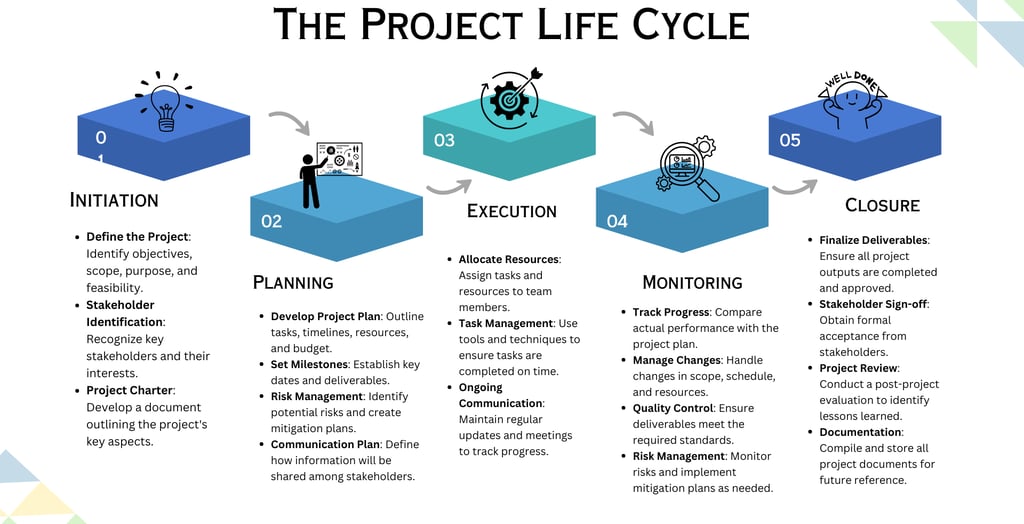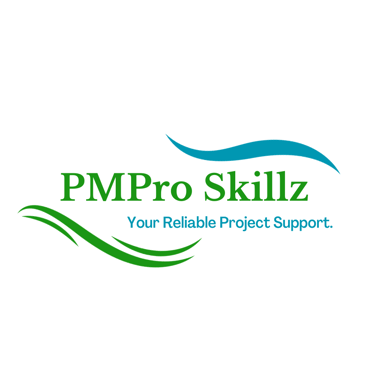Project Execution: A Practical Approach
Even the best-laid plans do not guarantee success during execution. Effective project execution goes beyond simply following initial plans—it demands leadership with foresight, flexibility, and clear communication to effectively navigate and overcome challenges.
Iyanna Trimmingham
6/20/20242 min read


When we talk about executing a project, we are referring to the process of transforming well-laid plans into tangible results- a critical skill for any leader, project manager, or team member. Although this journey often starts with a strategic plan, it is essential to recognize that in the real world, projects rarely unfold exactly as planned.
Let's dive into some strategies for successfully navigating through the execution phase.
Preparing to Execute:
The execution of any project begins long before the actual work- it starts with planning. Effective execution relies on meticulous preparation, tailored to the project’s methodology. This approach ensures every aspect, whether detailed or adaptive, is clearly outlined and understood:
Documenting the Plan: The foundation of successful execution is a well-documented plan. This document not only outlines what needs to be achieved but also details why it's important, who's responsible for what, and how each task will be approached.
Communication: Once the plan is documented, it is essential to have a process in place that ensures communication across all levels—from team members to stakeholders. This transparency builds trust and aligns everyone with the project's objectives and expectations.
Flexibility in Planning: Adaptability is key in executing projects. Plans must be living documents that evolve with the project's needs. Regular updates and revisions ensure the plan remains relevant and actionable.
Executing the Plan:
With a solid plan in place, execution involves a continuous loop of communication and adjustment:
Ongoing Communication: Constant communication keeps all stakeholders informed about progress and any emerging issues, fostering a collaborative environment and ensuring there are no surprises.
Risk Management: Identifying potential risks early and setting up triggers for necessary actions are key steps in effective project management. Utilizing project management tools such as Asana for task management, Trello for visual workflow depiction, and Jira for agile project management, helps maintain project momentum and address issues proactively.
Monitoring and Controlling:
Once the project is underway, the focus shifts to guiding it smoothly along its planned course and implementing adjustments as needed.
Tracking Progress: Conducting regular checks against planned milestones is crucial to ensure project alignment. Tools like Microsoft Project for detailed Gantt charts and Smartsheet for real-time collaboration provide invaluable data on schedule variances, budget status, and resource allocation.
Issue and Risk Alerts: Systems such as Slack for real-time communication and Monday.com for workflow automation should be in place to alert the team about risks and issues as they arise, allowing for timely interventions.
Corrective Actions and Control:
The real test of a project manager's skill is their ability to handle deviations from the plan:
Adjusting Timelines and Resources: Depending on the project's status, extending deadlines or reallocating resources may be necessary to meet objectives.
Budget Adjustments: Financial management might require increasing the budget or cutting costs. In some cases, forming strategic partnerships or setting up revenue-sharing agreements can help distribute financial burdens and benefit all involved parties.
Scope Adjustment: Be ready to adjust the project scope to align with evolving needs and stakeholder expectations, whether by scaling back certain areas or phasing elements of the project.
Effective project execution goes beyond simply following initial plans—it requires leadership characterized by foresight, flexibility, and clear communication to navigate and overcome challenges. This approach demands not only an openness to adapt strategies as obstacles arise but also the maintenance of ongoing dialogue with your team and stakeholders. By thoroughly documenting your plans, keeping communication channels open, and proactively managing risks, you can turn ambitious projects into tangible successes. Ultimately, effective project execution hinges on a team’s capacity to adapt and deliver, transforming potential hurdles into stepping stones for success.

